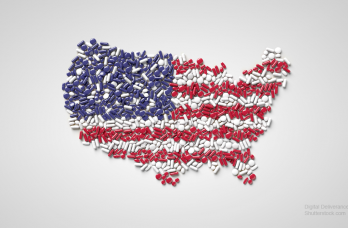- Safety & Recalls
- Regulatory Updates
- Drug Coverage
- COPD
- Cardiovascular
- Obstetrics-Gynecology & Women's Health
- Ophthalmology
- Clinical Pharmacology
- Pediatrics
- Urology
- Pharmacy
- Idiopathic Pulmonary Fibrosis
- Diabetes and Endocrinology
- Allergy, Immunology, and ENT
- Musculoskeletal/Rheumatology
- Respiratory
- Psychiatry and Behavioral Health
- Dermatology
- Oncology
New bills aim to lower drug prices
New legislation designed to curb drug costs comes on the heels of many pharma makers raising prices this year as well as payers saying they expect higher drug acquisition costs.

New legislation designed to curb drug costs comes on the heels of many pharma makers raising prices this year as well as payers saying they expect higher drug acquisition costs in coming years.
Senator Bernie Sanders (D-VT) and other senators and representatives introduced three new bills to combat high prescription drug prices.
One bill would permit HHS Secretary Alex Azar to negotiate lower Medicare Part D drug prices. The bills also want to allow Americans to import lower-priced drugs from outside the United States, and propose basing drug prices on the median price in five other countries.
Related: The impact of Medicare Part D proposals on drug pricing
However, the launch prices of most new medicines are no higher in the US than other countries, after rebates and discounts are applied, Robert Goldberg, co-founder and vice president of the Center for Medicine in the Public Interest, told FormularyWatch.
“The problem is that if the US launch price is calculated downward, all other countries will lower their reference prices,” Goldberg said. “That means the US prices would have to fall. There would be a race to the bottom to the point that developing new medicines would not be worth the time, effort and money at increasingly lower prices.”
Related: Pharma makers to hike drug prices in 2019
However, legislators have targeted high prescription drug prices as a major priority this year after nearly 30 pharmaceutical manufacturers said they will raise prices on their medications in January, according to a Reuters article. The price hikes impact more than 250 different medications.
In addition, many US payers expect their per-unit acquisition costs for prescription drugs to rise between 3% and 5% annually for the next 3 years, according to investment firm Cowen.
Health plans in California also paid 5% more-nearly $8.7 billion-for prescription drugs in 2017 versos 2016, according to a recent report from the California Department of Managed Healthcare.
“While specialty drugs accounted for only 1.6% of all prescription drugs, they accounted for over half (51.5%) of total annual spending on prescription drugs,” the report said.
Generic drugs, meanwhile, accounted for nearly 90% of all prescribed drugs, but only 23.6% of the total annual spending on prescription drugs.
Read more: Drug pricing controversies erupt
Payers Recognize the Benefits, but Still See Weight Loss Drugs through a Cost Lens
April 12th 2024Jeffrey Casberg, M.S., R.Ph., a senior vice president of clinical pharmacy at IPD Analytics LLC, a drug intelligence firm that advises payers and pharmaceutical companies, talks about how payers are thinking about weight-loss drugs.
